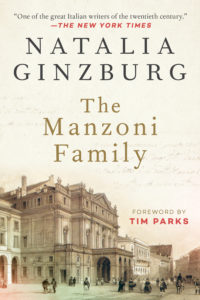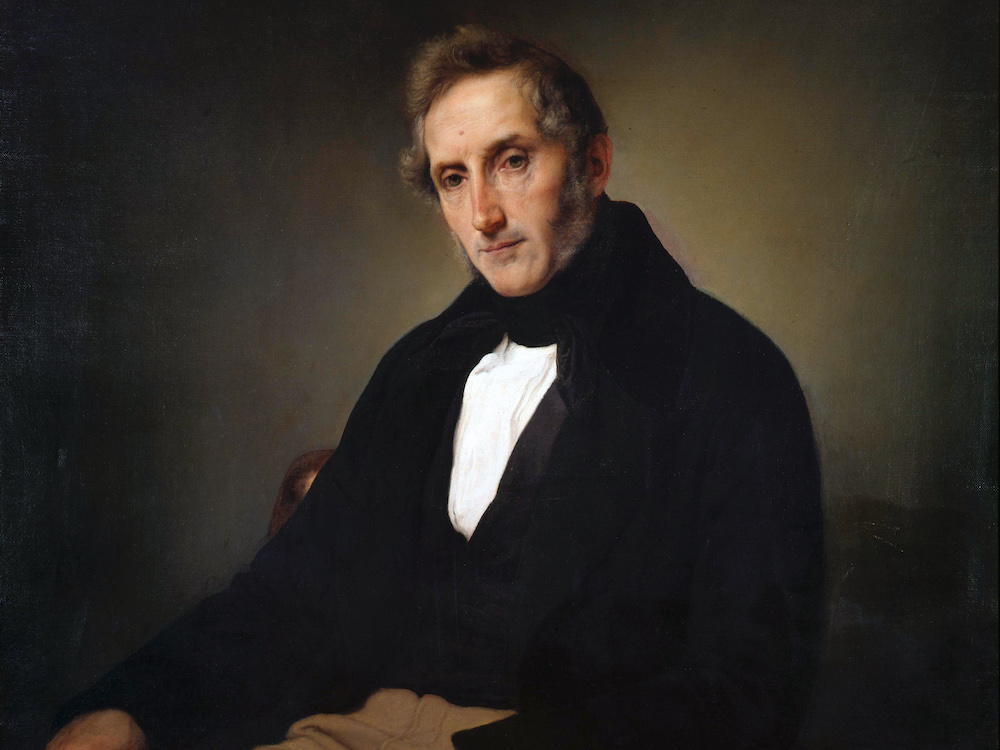The Manzoni Family is a meeting between two authors who at first glance could hardly seem more different. Alessandro Manzoni is simply the most celebrated figure in modern Italian literature. His great novel The Betrothed, published in quite different editions in 1827 and 1840, is the first modern novel in Italian, the later edition marking a milestone in the consolidation of Tuscan Italian as the language for a potentially united Italy. Profoundly Catholic in inspiration, the book was placed at the core of the Italian school syllabus after the country achieved unification in 1861 and still offers a linguistic and moral example to generation after generation of Italian children.
Natalia Ginzburg, on the other hand, was a Jewish novelist and a Communist, whose husband Leone Ginzburg died in a Fascist prison during World War II. While Manzoni’s prose now seems elaborate, sometimes magniloquent, Ginzburg’s is as spare, droll, and laconic as Italian writing ever gets. While he narrated grandiose drama in one eight-hundred-page tome, she chronicled the intimacy of the humdrum in eight rather slender novels and novellas. He was a lifelong phobic who suffered frequent panic attacks and found it impossible to leave the house without company and protection. She showed great courage and initiative during the war, saving her children and herself from the Nazi round-ups of the Jews in Rome after her husband’s death. But perhaps most of all, Manzoni was a profoundly religious man whose faith is very much at the center of his writing. Ginzburg was not religious at all and had nothing to say on the matter.
Why, then, this book? Perhaps the answer lies in the word family. All of Ginzburg’s novels are very much about families, and all her characters take on their charm and identity insofar as they are seen in relation to others. Her most famous book, Family Lexicon, is a lively study of her own family and circle of friends, in which everyone from the most illustrious to the most humble is given the same space, while she, the author, is barely present. It is rather as if she were telling us, If you want to know about me, you need to read about my family. All her work, she often observed, is in one way or other autobiographical, and many of her stubbornly awkward characters stand in relation to their families as she did to hers.
In the late seventies, Ginzburg was commissioned to produce an anthology of Italian literature for use in schools. This inevitably brought her back to Manzoni. A friend persuaded her to read the many volumes of letters connected with the author and his extended family. Suddenly “I understood how autobiographical The Betrothed was,” Ginzburg remarked, “how much he was like his many characters.” At this point, both the great novel and the writer behind it became more interesting to her, made more sense; in short, Ginzburg was fascinated by this choral aspect of life, the way no one, and no work of art, stands alone.
Yet The Manzoni Family is not meant as an approach to Manzoni’s writing, nor do you need to know anything about The Betrothed to enjoy it. In 1973 Ginzburg had written an epistolary novel, Caro Michele, and would publish another, The City and the House in 1984, about which she said, “I see the world … as if everyone were looking for a father they don’t have and at the same time trying to be a father without managing to.” This was exactly the story she found reading Alessandro Manzoni’s letters. Manzoni’s official father was nothing more than his mother’s husband, and that only briefly. The real father was a lover who took no interest in the boy. Manzoni would spend his life attaching himself to older and illustrious friends, or to priests and spiritual advisers, father figures. At the same time he had nine children himself, and proved quite inadequate as a parent.
Discovering this extraordinarily rich correspondence, the complex weave of alliances and enmities, of wives, lovers, friends, and children, nannies and priests; the dense and fascinating world of early nineteenth-century Milan, Florence, and Paris; the difficult journeys and the endless illnesses; the wrenching bereavements, political turmoil, and unexpected literary celebrity; the intellectual discussions on the one hand and the domestic minutiae on the other, Ginzburg must have felt it was the perfect material for the writerly skills she had spent a lifetime honing.
“Writing novels, I always had the feeling I had a broken mirror in my hand,” she observed, “something I always hoped I could put back together whole.” These letters from scores of correspondents over almost a century are the shattered mirror of an entire society. Ginzburg has reassembled them as she does her novels: unobtrusively, seamlessly, generously. It’s hard to think of a story more complex, or more effortlessly readable. And if, as the author is occasionally obliged to admit, a piece of the mirror is missing here and there, that is simply because what we are talking about here is life as it was really lived—the fine, tumultuous life from which great literature miraculously springs.
Tim Parks is the author of more than twenty novels and works of nonfiction, including Europa, which was short-listed for the Booker Prize. His essays have appeared regularly in The New Yorker and The New York Review of Books, for which he blogs. He lives in Italy.

from The Paris Review https://ift.tt/2zqNv90

Comments
Post a Comment